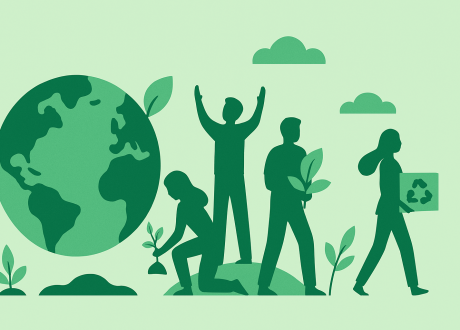
5 Steps to Build an Effective CSR Strategy
In today’s business landscape, Corporate Social Responsibility (CSR) has evolved from being a “nice-to-have” to ...

Marisa Henderson, the Chief of the Creative Economy Program in UNCTAD, highlighted disparities in creative economy as nearly 70% of creative services exports come from just 10 countries.
She made the remarks on Monday during the 3rd Egypt Business Solutions Summit held under the theme of “Creativity is the Key to Sustainability.”
“I extend my deepest gratitude to Dr Moustafa Madbouli, Prime Minister of Egypt, for his patronage of these pivotal events in collaboration with international organizations, academia and the private sector,” she said.
She said the creative economy is one of the world’s fastest growing sectors. “We live in a time of economic uncertainty, environmental challenges and geopolitical shifts.”
Against this backdrop, the creative economy stands out as vital for growth, opportunity and transformation, she asserted.
According to UNCTAD’s 2024 Creative Economy Outlook, the creative economy contributes between 0.5% and 7.3% of countries GDP and up to 12.5% of employment in countries that participated in UNCTAD’s most recent global survey, Henderson added.
These statistics reflect the diversity and growing significance of creative economy across different economies.
“Despite these positive contributions, we also see a stark imbalance,” Henderson highlighted.
Nearly 70% of creative services exports come from just 10 countries, primarily the US, China, and a few European nations.
In contrast, many developing countries have a limited share in the global creative economy, Henderson noted.
This disparity represents both a challenge and an opportunity.
She expounded that this disparity is an opportunity to unlock the potential of creative industries in developing nations with the right policies and investments.
Henderson identified key trends and challenges from a trade and development perspective, including the rapid ditigalization of the creative industries which she considered as changing the landscape today.
Digital platforms allow artists, designers and other creative professionals to reach global audience directly.
This offers enormous potentials but also brings significant challenges, she added.
For example, protecting intellectual property has become more difficult in this digital world and AI driven automation threatens to disrupt the labor market.
However, creative jobs are generally more resilient to automation.
OECD studies estimate that while 14% of jobs globally are at risk of automation, only 10% of creative and cultural jobs face this risk.
Creative industries must adapt to AI driven changes and for that “we need to invest in the skills training to help creative professionals utilize AI technologies effectively,” Henderson accentuated.
In many countries, creative firms lack in-house expertise in AI. They are dependent on external AI specialists.
This creates a gap between the opportunities digitalization offers and the capacity of firms to leverage these opportunities, she explained.
Closing this gap is essential for fostering a more competitive and inclusive global creative economy.
She urged policy makers and stakeholders to take coordinated action to build a resilient, inclusive and sustainable creative economy.
She highlighted several crucial strategic areas, including education and skills development, equal access to creative and cultural experiences and data availability.
Concerning education and skills development, she said “As AI and emerging technologies become integral to creative industries, demand for digital and interdisciplinary skills will continue to rise.”
Education and training must focus on building these skills, ensuring that creative professionals can adapt to technological changes.
“This is especially true in developing countries, where investments in digital skills can close socio-economic gaps and promote inclusive participation in the creative economy,” she underlined.
As for equal access to creative and cultural experience, she said equal access to creative and cultural experience from early age helps foster creativity and innovation.
Investments in art education, music, visual arts, and drama are vital for overcoming inequalities, she underscored.
اترك تعليقا